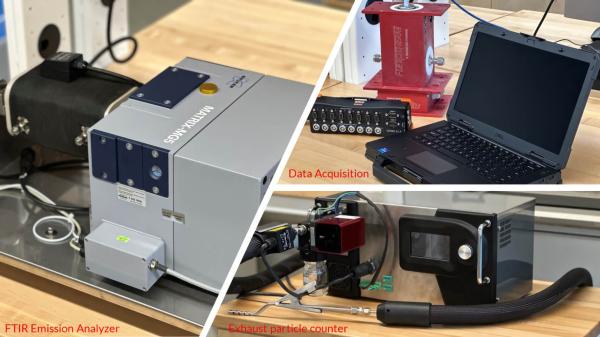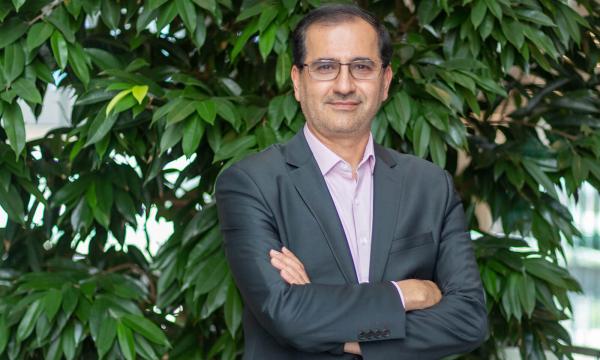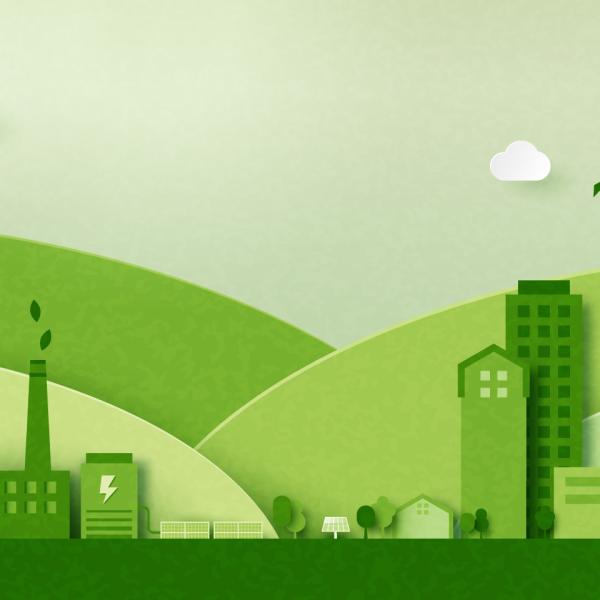Cities face a conundrum. They want to slash the toxins and greenhouse gas (GHG) emissions from vehicle exhaust. But with so many greener technologies and modes available — from electrification, hydrogen fuel and renewable diesel to cycling and public transit — how do they decide which options to pursue?
According to Vahid Hosseini, it starts with good, geographically specific data. “In transportation, it’s not like one solution fits all. It always has to be customized,” says Hosseini, who heads up the lab for Collaborative Research on Energy, Air Pollution, Transportation and Environment (CREATE) at Simon Fraser University's School of Sustainable Engineering.

That’s because real-life traffic emissions in one location can vary significantly from another with very different weather, terrain and driving behaviours. Yet cities often base decisions about transportation strategies on lab-based data, data from decades ago, or data captured thousands of kilometres away. Moreover, very little of the published literature looks at emissions in temperatures below –7 degrees Celsius, leaving cold-climate cities in the dark.
Hosseini plans to change all that with his new CFI-funded portable emission measurement system (PEMS). The powerful tool will allow him to measure greenhouse gas emissions and air pollution from the tailpipes of cars, trucks and buses as they drive around the streets of Greater Vancouver and Edmonton. “We use the city as a living lab,” he explains.
The research-grade PEMS can measure all the regulated emissions in vehicle exhaust — particulates, carbon monoxide, carbon dioxide, nitrogen oxides, unburned hydrocarbons — as well as up to 300 different unregulated gas compounds. A miniature meteorological module tracks air temperature, wind speed, wind direction and humidity. Meanwhile, other sensors measure vehicle speed and load.
But collecting all that real-world data is just the first step.

Creating a digital transportation twin
Hosseini will use that data to create models of transportation emissions in Vancouver and Edmonton that capture the complexities and interactions of different decarbonization options. These “digital twins” make it possible to test and compare different scenarios and interventions.
For example, what would happen if the city went fully electric? Or embraced hydrogen fuel? Would investing heavily in public transit and bike lanes slash emissions significantly? Or is imposing a fee to drive during peak times a more cost-effective pathway?
In each case, the outcomes will be specific to the city. After all, getting around on the steep, rainy slopes surrounding Simon Fraser University in Metro Vancouver is a very different proposition than on the relatively flat terrain of Edmonton in the dead of winter.
To turn that treasure trove of information into a usable model — and to then run simulations — Hosseini relies on an interdisciplinary team of researchers drawn from mechanical engineering, Earth and atmospheric science, civil engineering, public policy, urban planning and environmental health.
“It is challenging. It is tedious. It is time consuming. It requires lots of due diligence,” Hosseini acknowledges. But the results are worth it. “That’s how we inform the policy makers.”
Guiding good GHG policies
Ultimately, Hosseini hopes his research will help cities understand how different transportation technologies and modes of technologies can reduce emissions in their communities. That’s especially crucial when it comes to climate change, says collaborator Amanda Giang, a researcher in the University of British Columbia’s Institute for Resources, Environment and Sustainability. Today, urban transportation accounts for roughly a quarter of Canada’s total greenhouse gas emissions.
“We don’t have a tonne of time,” she says. “It’s not about just setting the target. This is the sort of data that we need to figure out how we will meet those targets.”
The models Hosseini is producing will give cities the opportunity to test-drive different options and choose the best pathways before making investments that lock them in for a decade or more.
“I think we have the opportunity to make decisions that can really advance a broad set of goals,” Giang says.
That includes addressing issues related to climate change, air quality and human health. But it also means advancing environmental justice. For example, Giang points out that marginalized communities tend to be located near major roads and highways, exposing them to much higher levels of pollution than higher-income neighbourhoods.
“Understanding both the current picture but also opportunities to reduce those emissions and exposures in the future I think is really important,” she says.
Ensuring future resilience

Hosseini agrees that future proofing is key. That means investing in tailored solutions that consider both the needs of today and the coming decades, ensuring transportation systems can withstand flooding and other climate challenges in the coming decades.
Because the stakes are incredibly high, he argues: “It’s not about technology. It’s not about fuel. It’s not about emissions.” Instead, it’s about ensuring people can continue to get where they need to go. “The ability of people to access transportation networks and mobility actually changes lives.”
“By providing high-quality real-world emission and energy consumption data, this CFI-funded research will help communities develop informed policies to decarbonize transportation.”
— Vahid Hosseini








